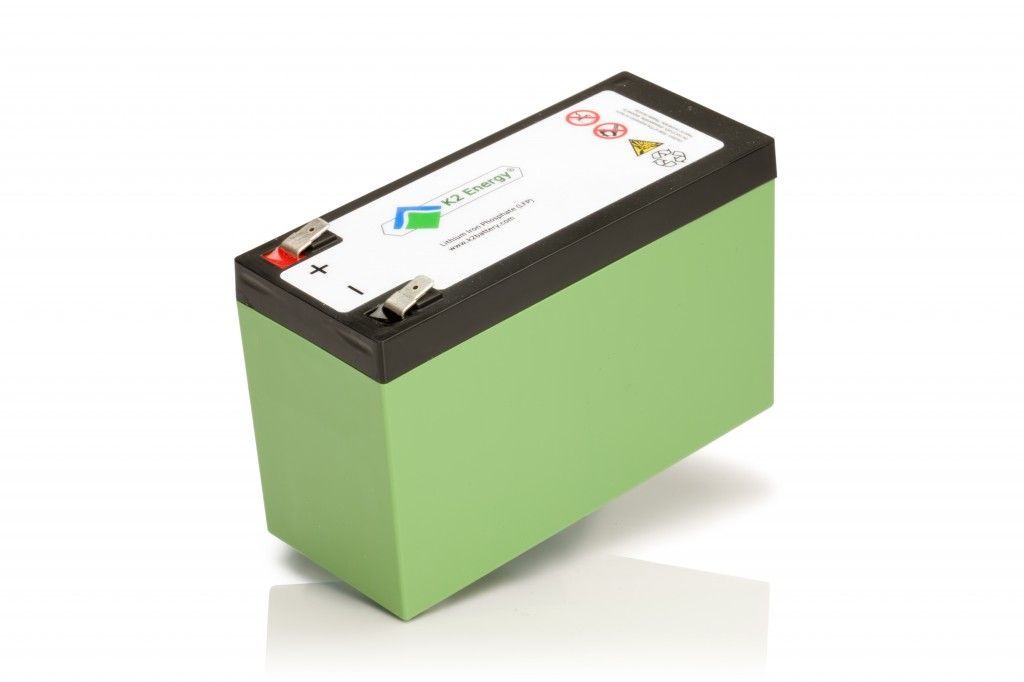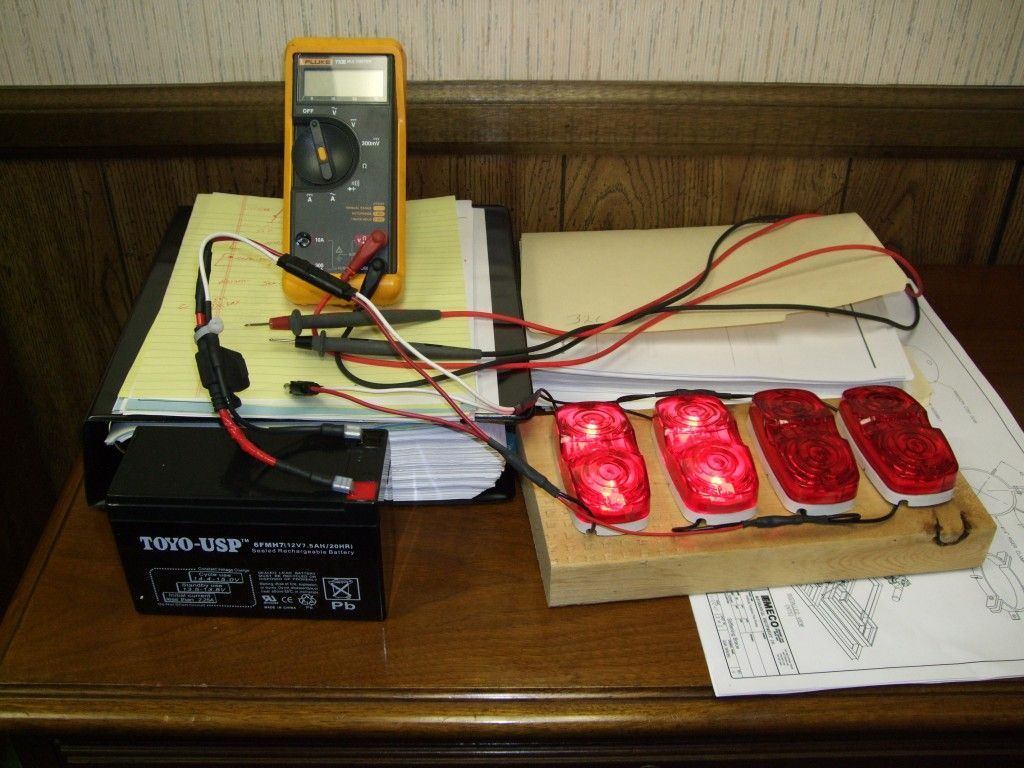I really did not give my glider battery much thought until it ran down and took out my logger 7 miles from the airport at 6,000 FT AGL on the final leg of my first 300K gold distance flight attempt. After that I gave my glider battery a lot of thought.
Until recently a Sealed Lead Acid Battery (SLA) commonly known as a Gel Cell, was about the only game in town for glider batteries. The new lithium batteries offered promise, but they came with some safety concerns. Here is a comparison of the capabilities and characteristics of the most commonly available battery technologies, including the three different Lithium battery chemistries.
| Individual | Energy | |||
| Cell | density | Cycle | ||
| Chemistry | Voltage | Wh/Kg | Life | Safety |
| LiFePO4 | 3.2 | ~120 | >2000 | Safe |
| Lead Acid | 2.0 | ~35 | >200 | Safe |
| NiCd | 1.2 | ~40 | >1000 | Safe |
| NiMH | 1.2 | ~80 | >500 | Safe |
| LiMnxNiyCozO2 | 3.7 | ~160 | >500 | Marginal |
| LiCoO2 | 3.7 | ~200 | >500 | No |
As you can see from the above table Lithium batteries offer better capabilities in terms of energy density and cycle life than other currently available technologies. At one time I was responsible for a technician repairing power line vibration data loggers. These loggers attached to the power lines on high voltage transmission towers and recorded the wind induced power line vibration over a period of several months so that we could recommend the correct vibration dampening equipment. The loggers were powered by two lithium batteries, each slightly larger than the standard D cell flashlight battery. We kept two of the harmless looking batteries in a clear Lexan box above the workbench attached to two test leads used to power the logger boards as they were being tested and repaired. One afternoon the technician inadvertently shorted the two test leads. Those supposedly harmless D cell batteries got hot, started off gassing and before you know it we had the building evacuated and got a real close look at every fire truck in town. They never caught on fire because the short was momentary, but they did cause way more of a ruckus that you would ever want going on behind your head in your glider cockpit. A recent RC modeler related a story to me where the lithium battery powered model someone was flying, crashed and set the field on fire. All of these stories make someone a little cautious when it comes to considering using a lithium battery in their glider.
The recent demand for electric vehicles, and the need for storage of electricity from wind or solar generated power, have all caused a recent push for improved battery technology. No one wants to find themselves in a car wreck sitting on top of a much bigger version of the lithium battery we used to use in the vibration data loggers, or the RC model battery that set the field on fire.
The newest lithium battery chemistry LiFePO4 seems to be an ideal choice for a lot of applications including gliders. It is as safe as SLA batteries. It has the storage capacity typical of lithium batteries. It has an excellent cycle life, and it does not contain the oxide component that fuels the fire when other types of lithium batteries experience thermal runaway. Combining the safe chemistry of the LiFePO4 with a circuit board (PCM) to protect the battery from over charging, undercharging, and the capability to balance the charge on the individual cells, would appear to be the ideal combination for glider batteries.
How much battery do you need? Since the failure of my battery on that first 300K attempt, I think more is better. However I currently fly an LS6a and space available for batteries is very limited. I have a friend with a Libelle, he is space and weight limited. So in some cases, less may be more when it comes to battery size. Start by measuring your electrical needs with an amp meter. For example:
The radio’s high current draw when transmitting presents us with somewhat of a problem. Just how much time do we spend talking on the radio? Let’s assume 5% of the time in the glider we are transmitting. Now how long do we need the battery to last? Let’s be ambitious and say 8 hours and do the math.
0.8A x 8HR x 0.95 = 6.08 AH
2.02 x 8HR x 0.05 = +0.81AH
6.89AH
Since some of the battery’s capacity is only available at voltages lower than what our electronics will function on, let’s only plan on 70 % of the battery’s capacity being useful.
6.89 AH / 0.80 = 8.61 AH
The internet is a marvelous thing. Looking for a >8.61 AH, LiFePO4, Lithium battery, yields several hundred’s of choices. Unfortunately most of them look like something that would be more at home on the vest of a suicide bomber, rather than in my glider. Thick black shrink wrap, partially exposed cells, with a couple of wires sticking out of it seems to be the norm. Adding the protective circuit board (PCM) becomes something of a do it yourself project with most of these offerings.
One standout in the crowd is the K2 energy LFP12v10-b. K2 Energy took the standard box for a 7.5AH SLA battery, and put 12v x 9.6 AH worth of LiFePO4 cells in it along with the PCM to prevent over charging, over discharging, and the circuitry to balance the charge among the individual cells with 1.3 Kg weight.
I belong to the trust but verify school of engineering. So after I purchased the K2 battery I hooked it up to my battery load tester, and recorded the voltage drop over time.
The battery load tester is a couple of 12V side marker lights screwed down to a 2 x 4, that gives me a steady load of 1.23 A with two of the four lights burning. 11.5 V was established as the minimum useable voltage because my radio does not work very well below 11.5 V. This same test was repeated with a 7.5 AH SLA battery and a 12 AH SLA battery. The results of this test are illustrated in the following graph.
The following table illustrates the percentage of the AH capacity of each battery that is actually useable between the nominal 12V and 11.5 V with a 1.23 A load
| Battery | Actual | Actual | Useable | Rated | Act.Useable |
| Amps | Hours | AH | AH | % capacity | |
| K2 9.6 AH | 1.23 | 7.53 | 9.2619 | 9.6 | 96% |
| 12 AH | 1.23 | 8.05 | 9.9015 | 12 | 83% |
| 7 AH | 1.23 | 4.6 | 5.658 | 7.5 | 75% |
Because of their ability to deliver a lot of energy very quickly, it’s extremely important that a LiFePO4 battery installation includes the following:
- Install a properly sized fuse as close to the battery terminal as possible
- Insulate the battery terminals to prevent incidental shorts (hot melt glue works well)
- Use keyed plugs and sockets to prevent possible reverse polarity connections.
- Use a smart charger made for the battery
- Adequately secure the battery in the glider so that it does not become a missile in a crash.
- Don’t drop the battery, expose it to extreme heat, or open it up to see what’s in there.
If you need more battery capacity for that new transponder you have been considering, run two batteries in parallel. The battery characteristics make it unlikely for a failure in one battery to take out the other one. The two batteries in parallel installation removes one switch from the panel and eliminates the potential for a logger killing period of no voltage if you turn one battery off before switching to the second one. Charge them in parallel, run them in parallel.
The cost of the LiFePO4 battery is approximately 3 times the cost of a comparable SLA battery, but if you factor in the increased number of cycles available, the cost is approximately equal in the long run. The higher energy density, and lower weight make the LiFePO4 a viable alternative to the industry standard SLA battery.
Note: All batteries designed for use in airplanes with standard airworthiness certificates, including sailplanes require FAA approval. Current FAA Lithium battery policy requires STC and RTCA DO-311 testing to verify the airworthiness aspects of the battery and installation. This has not been done on the K2 battery featured in this article. If Lithium batteries are being installed in gliders holding an experimental airworthiness certificate, FAA approval must be obtained from the local FSDO.











4 comments for “New Technology in Glider Batteries”